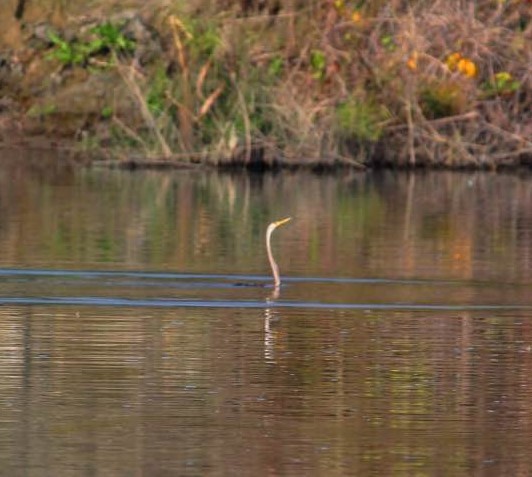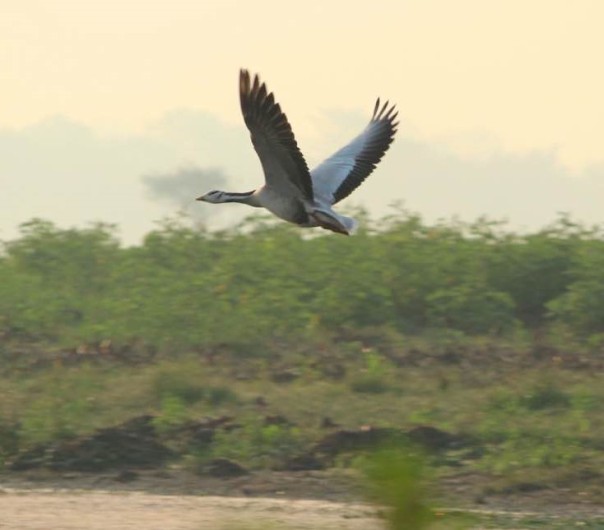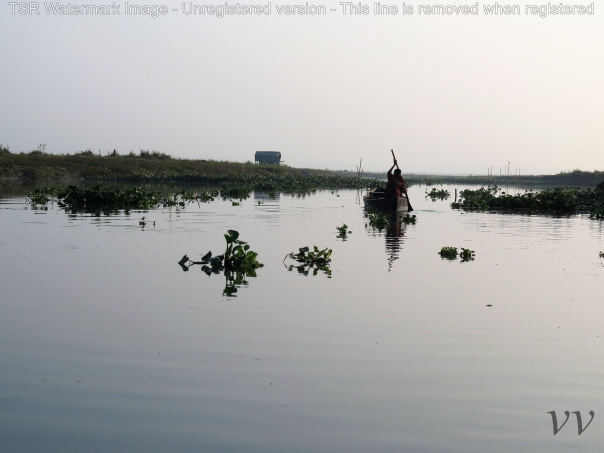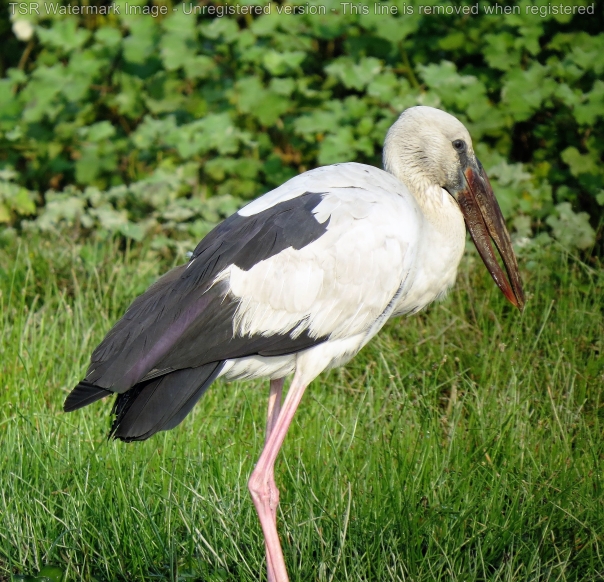Skipping the standard Northeast tourist circuits of Guwahati-Kaziranga-Shillong and Tawang-Bomdilla, we landed at Dibrugarh airport one fine afternoon with a rough plan to explore regions in Upper Assam and parts of Arunachal Pradesh around it. Apart from Dibrugarh and Tinsukia, which are major cities of upper Assam, I had not heard of most of the places in that region till Google opened the windows (is it a pun?) to the information available on the web, some in great detail and some very sketchy. Roing, Tezu, Dehing river, Dibang valley, Digboi (ah! I know that place), Dibru river, Margherita, Lohit river, Patkai rainforest, Maguribeel, Dibru Saikhowa national park, Myudia, Mehao, Miao…….Phew!
There is so much to see in upper Assam and the experiences are so varied that you cannot put them all together in a single article. So, what comes in Part I? The one which had the greatest impact on my senses – the birds of Dibru Saikhowa National Park and Maguribeel.

Dibru Saikhowa is a national park as well as a biosphere reserve. In fact, it is one of the identified biodiversity hotspots, that is, a region with a significant reservoir of biodiversity and at the same time is threatened with destruction, having lost a significant portion of its original habitat.
Dibru Saikhowa is unlike the other National Parks of India – you don’t have jeep or elephant safaris, forest lodges and not even beaten tracks. Dibru Saikhowa has two villages situated deep inside the forest – Dhadia and Laika. For tourists in general, the park is explored only from the boats cruising on Dibru river, a channel of the mighty Brahmaputra. You reach Guijan, about 12 km away from Tinsukia, from where the cruises start. Om boat house is a well-known cruise operator, a day long cruise costing Rupees 1250 per person, including breakfast, lunch and snacks on board. The cruise vessel seems to have been taken straight out of a fairy tale book, with colorful tiny cabins and deck chairs.

You cruise over the Dibru for a while, looking out for the occasional dolphin or an egret perched over a drifting branch.
After a while, the boat docks on a sandy stretch of the saikhowa forest, deck chairs and sun umbrellas are offloaded and arranged on the shore and the tourists gingerly disembark and lounge around, make themselves comfortable, taking in the scenery and the refreshments. If there is anything overtly touristy about this whole trip, this is it. 

They could have arranged for at least a short hike in the forest, with permission from the forest authorities, to get a feel of the flora and perhaps get a glimpse of the wild feral horses for which this is a natural habitat. However, after relishing the tourist trappings, we cruised further along narrower channels in a smaller motorboat, and we could see many more birds.

Cormorants and ruddy shelducks are in plenty. The latter, also known as Brahmini ducks, swim, waddle and fly in pairs. During the breeding season, the male is distinguished by a black ring on its neck.







The great cormorants and darters (also known as snake bird) are commonly sighted in dibru saikhowa.


After about two hours, the motorboat heads back to where the cruise boat is docked and it is time for lunch on board. It is siesta time thereafter and the cruise ends at guijan just when the sun sets. It was a spectacular sight and we just gazed at the setting sun, the golden hues it spread on the river and at the blazing sky. 


The sunset on the Brahmaputra is one of the most soothing sights that I have experienced.
All through the cruise on dibru, we kept hearing about Maguribeel and the excellent bird sightings that a canoe trip can provide. Beel in Assamese means lake with marshy areas. Maguribeel is on the south bank of Dibru river and is connected to it by a system of channels.

This place has to be visited early in the morning to see hundreds of local and migrant birds. It is a kilometer or so further ahead of Guijan and if you are based in Tinsukia, it would take just half an hour to reach Maguribeel. It is a shallow lake with a thick network of weeds forming the bed and the canoe moves noiselessly through the lake, skirting the marshes which throng with bird life. The white wagtail, a common winter visitor to Assam, is spotted easily but very difficult to photograph as it keeps flitting. I was eventually able to photograph it on the shore after getting off the canoe.

You see a wide variety of birds on maguribeel – purple moorhens, teals, yellow wagtail, open billed storks, black-winged stilt, pied kingfisher, night heron and many more which we could not identify.









I was truly satiated with an hour spent on Maguribeel but for avid birdwatchers who would like to make several trips on the beel watching and studying the birds, there is a Kohuwan Eco camp with lodging facilities which arranges for boat trips too.
I present these black and white beauties as a finale to the memorable time spent at dibru shikhowa and maguribeel.


